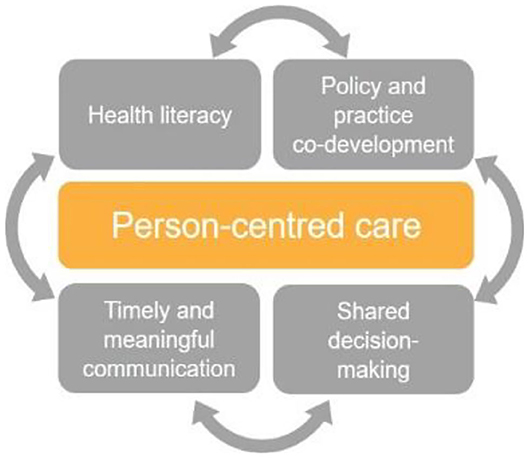Difference between revisions of "Template:Article of the week"
Shawndouglas (talk | contribs) (Updated article of the week text.) |
Shawndouglas (talk | contribs) (Updated article of the week text) |
||
| Line 1: | Line 1: | ||
<div style="float: left; margin: 0.5em 0.9em 0.4em 0em;">[[File:Fig1 | <div style="float: left; margin: 0.5em 0.9em 0.4em 0em;">[[File:Fig1 Georgiou FrontDigHlth2021 3.jpg|240px]]</div> | ||
'''"[[Journal: | '''"[[Journal:Diagnostic informatics: The role of digital health in diagnostic stewardship and the achievement of excellence, safety, and value|Diagnostic informatics: The role of digital health in diagnostic stewardship and the achievement of excellence, safety, and value]]"''' | ||
Diagnostic investigations (i.e., pathology [[laboratory]] analysis and [[medical imaging]]) aim to increase the certainty of the presence of or absence of disease by supporting the process of differential diagnosis, support clinical management, and monitor a patient's trajectory (e.g., disease progression or response to treatment). Digital health—defined as the collection, storage, retrieval, transmission, and utilization of data, [[information]], and knowledge to support healthcare—has become an essential component of the diagnostic investigational process, helping to facilitate the accuracy and timeliness of information transfer and enhance the effectiveness of decision-making processes. Digital health is also important to diagnostic stewardship, which involves coordinated guidance and interventions to ensure the appropriate utilization of [[Diagnostic laboratory|diagnostic tests]] for therapeutic decision-making. ('''[[Journal:Diagnostic informatics: The role of digital health in diagnostic stewardship and the achievement of excellence, safety, and value|Full article...]]''')<br /> | |||
<br /> | <br /> | ||
''Recently featured'': | ''Recently featured'': | ||
{{flowlist | | {{flowlist | | ||
* [[Journal:Development and implementation of an LIS-based validation system for autoverification toward zero defects in the automated reporting of laboratory test results|Development and implementation of an LIS-based validation system for autoverification toward zero defects in the automated reporting of laboratory test results]] | |||
* [[Journal:Emerging and established trends to support secure health information exchange|Emerging and established trends to support secure health information exchange]] | * [[Journal:Emerging and established trends to support secure health information exchange|Emerging and established trends to support secure health information exchange]] | ||
* [[Journal:Security and privacy in cloud-based eHealth systems|Security and privacy in cloud-based eHealth systems]] | * [[Journal:Security and privacy in cloud-based eHealth systems|Security and privacy in cloud-based eHealth systems]] | ||
}} | }} | ||
Revision as of 15:14, 4 April 2022
Diagnostic investigations (i.e., pathology laboratory analysis and medical imaging) aim to increase the certainty of the presence of or absence of disease by supporting the process of differential diagnosis, support clinical management, and monitor a patient's trajectory (e.g., disease progression or response to treatment). Digital health—defined as the collection, storage, retrieval, transmission, and utilization of data, information, and knowledge to support healthcare—has become an essential component of the diagnostic investigational process, helping to facilitate the accuracy and timeliness of information transfer and enhance the effectiveness of decision-making processes. Digital health is also important to diagnostic stewardship, which involves coordinated guidance and interventions to ensure the appropriate utilization of diagnostic tests for therapeutic decision-making. (Full article...)
Recently featured:










